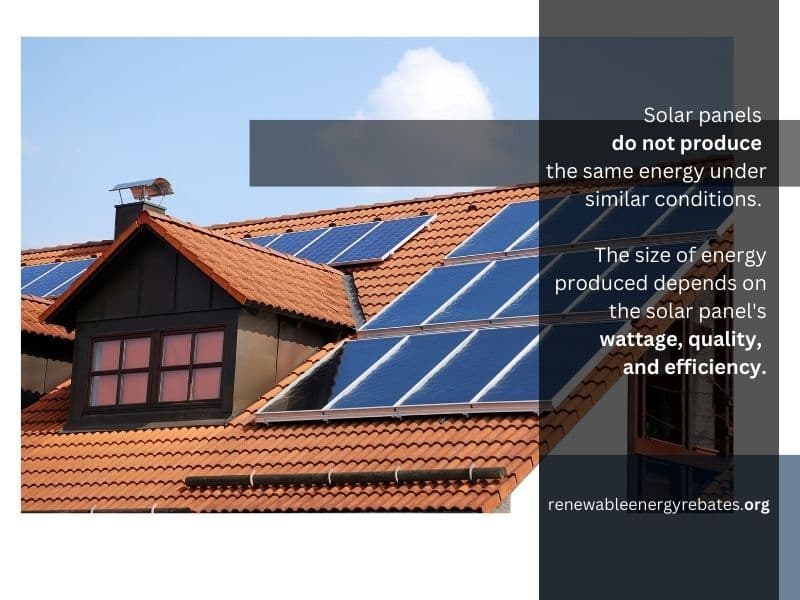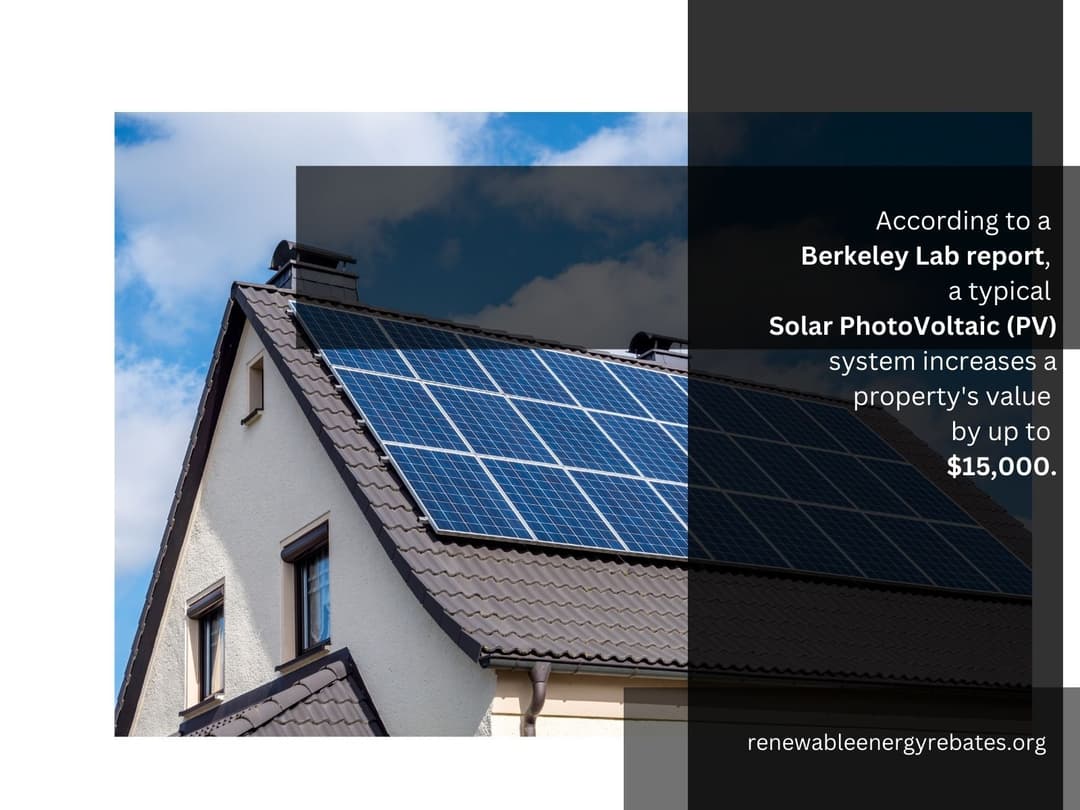Solar Panels in Alameda County, CA
Cost of Installing Solar Panels in Alameda County, California
Key Details
- Average cost of solar panels in Alameda County ranges from $11,000 to $17,000 with cost per watt ranging from $2 -$4.
- Solar panels in Alameda County have an estimated payback period of 6-10 years and can last up to 25 years.
- Factors that influence the cost include system size, brand quality, and type of solar panel.
- Incentives for going solar include the California Federal Tax Credit, Self-Generation Incentive Program (SGIP), and Net Metering 3.0 among others.
Going Green in Alameda County
With a population of 1,723,184, Alameda County ranks seventh among the most populous counties in California. The county has a higher female population than males with 50.77% being female while 49.22% are male.
Alameda county has a relatively young population with the median age being 38. As of 2023, the county has 590,102 households with an average household size of 3. 67.
How much do Solar Panels cost in Alameda County, CA?
As of 2023, Alameda county solar panel installations for a 4 to 7kW system range between $11,000 and $17,000. A solar panel costs between $2 and $4 when calculated on a cost-per-watt basis.

Average cost of solar panels in Alameda County, by system size.
| Energy System Size | Solar Panel Cost | Cost After Credit |
| 3kW | $8,160 | $6,038 |
| 4 kW | $10,880 | $8,051 |
| 5 kW | $13,600 | $10,064 |
| 6 kW | $16,320 | $12,077 |
| 7 kW | $19,040 | $14,090 |
| 8 kW | $21,760 | $16,102 |
Costs will also vary based on the type of solar panel. The following table details the installation and purchasing costs for various panel types.
| Average Cost Breakdown for Solar Installation in Santa Clara County | |
| Solar Panel Type | Cost Per Watt |
| Monocrystalline Solar Panels | $1 - $1.50 |
| Polycrystalline Solar Panels | $.90 - $1 |
| Thin Film Solar Panels | $1 - $1.50 |
| Other Costs | |
| Solar Batteries | $.4 - $.75 |
| Cost of Racking | $.25 - $.50 per watt. |
| Installation and soft Costs | $2.50 - $4.50 per watt |
How Long Does it Take for Solar Panels to Pay for themselves in Alameda County?
Six to 10 years is typically how long it takes for solar panels to pay for themselves. Multiple factors affect the solar payback period. For instance, a larger solar energy system will cost more upfront but result in greater monthly savings.
Also, a major increase in your utility's electricity bill may have a significant influence on your long-term savings. Modern photovoltaic (PV) solar panels have an expected lifespan of at least 25 years and an efficiency of at least 80%. Some modern solar panel models have even longer lifespans.
The three most common types of solar panels used for residential installations are thin-film, monocrystalline, and polycrystalline.
What Determines the Cost of Solar Panels in Alameda County, California?
Multiple factors determine the cost of solar panels in Alameda County, including the size, location, and type of panels used.
The Size of the Solar Panels: The size of the system influences the cost of installing solar panels. This is because a larger system requires more work to install. For instance, solar panels that produce 25 kW cost on average $53k while those that produce 2 kW cost on average roughly $4k.
Brand Quality: Prices of solar panels in California vary depending on the brand manufacturer. Depending on the manufacturer, your solar panels may cost between $12,000 and $18,000. The more reputable the brand, the more your solar panels will cost. Homeowners may prefer to buy energy solutions from reputable brands like Enphase, Tesla or Generac.
Type of Installation: Solar panel installations come in various forms. The most typical mounting is roof mounts. However, installing ground mounts and carports could call for additional posts that need to be fixed into the ground. Sometimes, this can result in greater labor and component costs.
Type of Solar Panel: The three most common varieties of solar panels used for residential use are thin-film, monocrystalline, and polycrystalline. If you want something economical, polycrystalline might be the best option. However, if you are looking for more effective panels, monocrystalline panels are the way to go.
Per watt, polycrystalline solar panels are priced between $0.90 and $1. Contrastingly, monocrystalline solar panels are priced between $1 and $1.50 per watt.

What are the Incentives for Solar energy in Alameda County, California?
California offers some of the best solar incentive programs nationwide. Some of the rebates and incentives offered to Alameda County residents include:
Inflation Reduction Act (IRA)
Homeowners that meet the requirements and install solar panels on their homes may be eligible for a tax credit. This tax credit can go as high as 30% of the system's cost. Buyers who are eligible for a rebate for solar panels in California may receive credit ranging from $300 overall to $0.95 per installed watt of capacity.
Self-Generation Incentive Program (SGIP)
The Self-Generation Incentive Program (SGIP) offers a rebate for the purchase and installation of a solar battery and rooftop panel system. Be aware that this changes, depending on the utility and battery storage capacity.
Net metering
Net metering is another incentive to go solar in Alameda County. Owners of solar energy installations in Alameda County will earn bill credits from their utility for the excess solar energy.
In California, the capacity cap for the net metering program is 5% of the maximum peak consumer demand. In addition, many major utilities provide net metering programs, including Pacific Gas & Electric (PGE).
Disadvantaged Communities - Single-family Solar Homes (DAC-SASH)
The DAC-SASH program offers upfront incentives to single-family houses that install solar panels and satisfy the income requirements.
To be eligible for the incentive, however, residents must be customers of Pacific Gas and Electric (PG&E), Southern California Edison (SCE), or San Diego Gas and Electric (SDG&E).
How can I Sell Solar Energy in Alameda County, California?
In California, homeowners are permitted to construct renewable energy production facilities. These facilities help them meet their additional energy needs. These energy facilities can also be connected to the electrical grid by homeowners.
Additionally, many legislative acts require the California Public Utilities Commission (CPUC) to establish tariffs. These tariffs mandate that customers be permitted by investor-owned utilities (IOUs) to be customer-generators. Customer-generators are customers who go on to generate their own electricity.
Customers can use net energy metering (NEM) in Alameda County to sell the solar energy they produce. Due to net energy metering, participating clients can get a bill credit for excess electricity exported to the electric grid.
A change is then made to the customer's bill to reflect the bill credits. The bill credits will be applied at the same retail rate as the acceptable rate structure.
Clients seeking NEM 2.0 were required to fulfill the following:
- Customers with solar installations under 1 megawatt are required to pay an interconnection fee. The previous interconnection fees for each IOU will be used to calculate this fee.
- Customer-generators are required to pay nominal fees for each kWh of grid electricity they utilize.
- Customer-generators must agree to serve on a Transfer to time-of-use basis in order to submit an application for NEM 2.0.
Note: NEM 2.0 was replaced by NEM 3.0 in early 2023.
NetMetering 3.0 in Alameda
NEM 3.0, the most recent iteration of net metering in California, was approved by the CPUC on December 15, 2022. Under NEM 3.0, net metering compensation rates for new customer-generators will likewise be substantially decreased by roughly 75%.
Released in April 2023, NEM 3.0 reduces compensation for excess electricity transmitted to the electric grid. In Alameda County, credit, which is equal to the retail price of electricity, is granted for exported solar power. In this case, one-to-one net metering is utilized. As a result, customers get credit for solar exports at the same rate they get for electricity from the grid.
The billing structure in NEM 3.0. switches from net-metering to net-billing. To do this, the Commission is developing a new, lower-valued rate for crediting solar export. In essence, a separate price will be set for whatever electricity you transmit to the grid by your utility. Furthermore, it won't be determined by your typical electricity rates.
Do You Need a Handyman or a Solar Installer in Alameda County?
The U.S. Office of Energy Efficiency and Renewable Energy urges that solar installations be carried out by a qualified professional.
In California, the Contractors State License Board (CSLB) requires that solar contractors hold a specific license depending on the type of work they are performing.
- "A": The General Engineering Contractors License enables the contractor to perform specialized engineering tasks such as grading, excavation, and construction of dams, roads, and bridges.
- "B": The General Building Contractors License which allows for the performance of residential and commercial construction, remodeling, and repairs.
- “C-4”: The Boiler, Hot-Water Heating, and Steam Fitting Contractor License allow you to perform projects that include solar heating equipment associated with systems authorized by this classification.
- “C-10”: The Electrical Contractor License allowing for the generation, transmission, transformation, or utilization of electrical energy.
- “C-36”: The Plumbing Contractor License allows you to perform any project using solar equipment to heat water or fluids.
- “C-46”: The Solar Contractors License which enables the contractor to install, modify, maintain, and repair thermal and photovoltaic solar energy systems.
- “C-53”: The Swimming Pool Contractor License allows you to install solar heating in swimming pool projects.
NOTE: These licenses are different from the certifications that some solar installers may have from industry organizations. These certifications may demonstrate that an installer has additional training or experience in specific areas of solar installation. They, however, do not replace the state-mandated licensing requirement.
Are Tesla Solar Panels Available in Alameda County, California?
Yes, Tesla solar panels are available in Alameda County, California. Tesla provides an online search tool for customers who wish to find a local Tesla-certified solar panel installer in their area.
Working with a local Tesla-certified installer has several benefits, such as:
- Direct communication with the installer regarding the installation process
- Accurate assessment of the cost of the installation and any permits required
- Speedy response to any questions or concerns you may have after the installation
- Knowledge of specific regulations and requirements of Alameda County, California.
Do Solar Panels Increase a Home Value in Alameda County?
Yes. Solar panels can increase a home's value in Alameda County. According to a study by the National Renewable Energy Laboratory, homes with solar panels sell for a premium compared to similar homes without solar.
The study found that on average, homes with solar panels sold for 4.1% more than similar homes without solar. However, the exact amount that a home's value increases with solar panels can vary depending on several factors such as:
- The size of the solar panel system
- The age of the system, if you have an older solar system, you will need to account for depreciation.
- The location of the property.
- The demand for solar energy in the area.
- The cost of electricity.
- The local real estate market conditions

Are Solar Panels Exempt from Property Taxes in Alameda County?
In Alameda County, California, homeowners using active solar energy systems can enjoy a property tax waiver through the Active Solar Energy System Exclusion. This policy is designed to support the state's goal of 100% clean energy by 2045 and provides property tax relief until 2026.
It is worth noting that this exclusion applies only to active solar energy systems and not to passive systems such as solar pools or hot tub heaters, wind systems, or passive solar energy systems.
How to Find Solar Companies Near Me in Alameda County, California?
Use these 6 easy steps to find solar companies near you.
- Step 1: Search "solar companies near me" on your preferred search engine.
- Step 2: Browse results and visit each company’s website for information on their services, experience, and customer reviews.
- Step 3: Make a list of your top 5 companies.
- Step 4: Check their website for customer reviews.
- Step 5: Verify that the company you are considering is licensed and insured to provide solar panel installation services.
- Step 6: Contact and schedule installation with your chosen company. You can also contact a local Alameda County solar panel installer to assist with your installation.